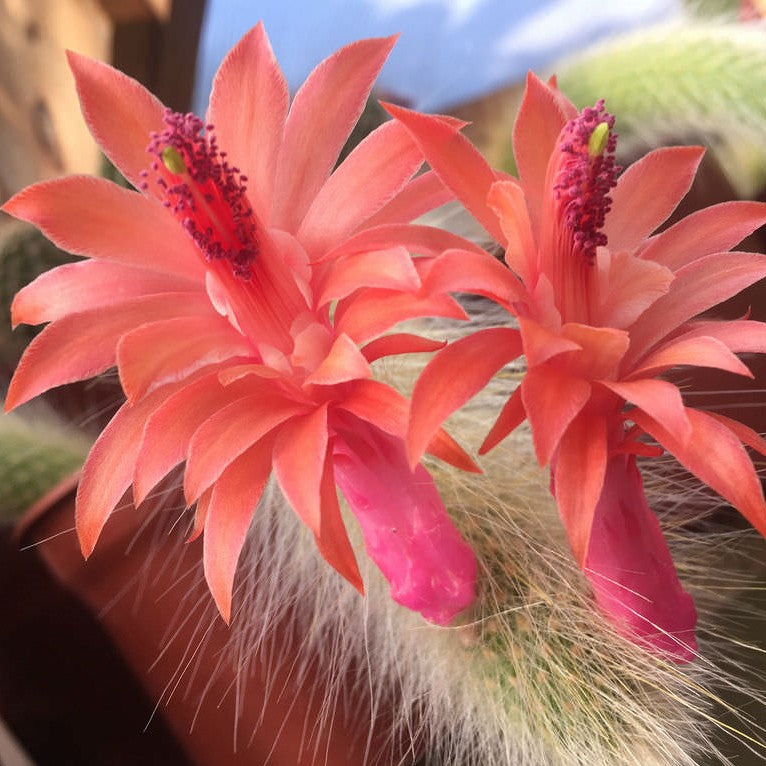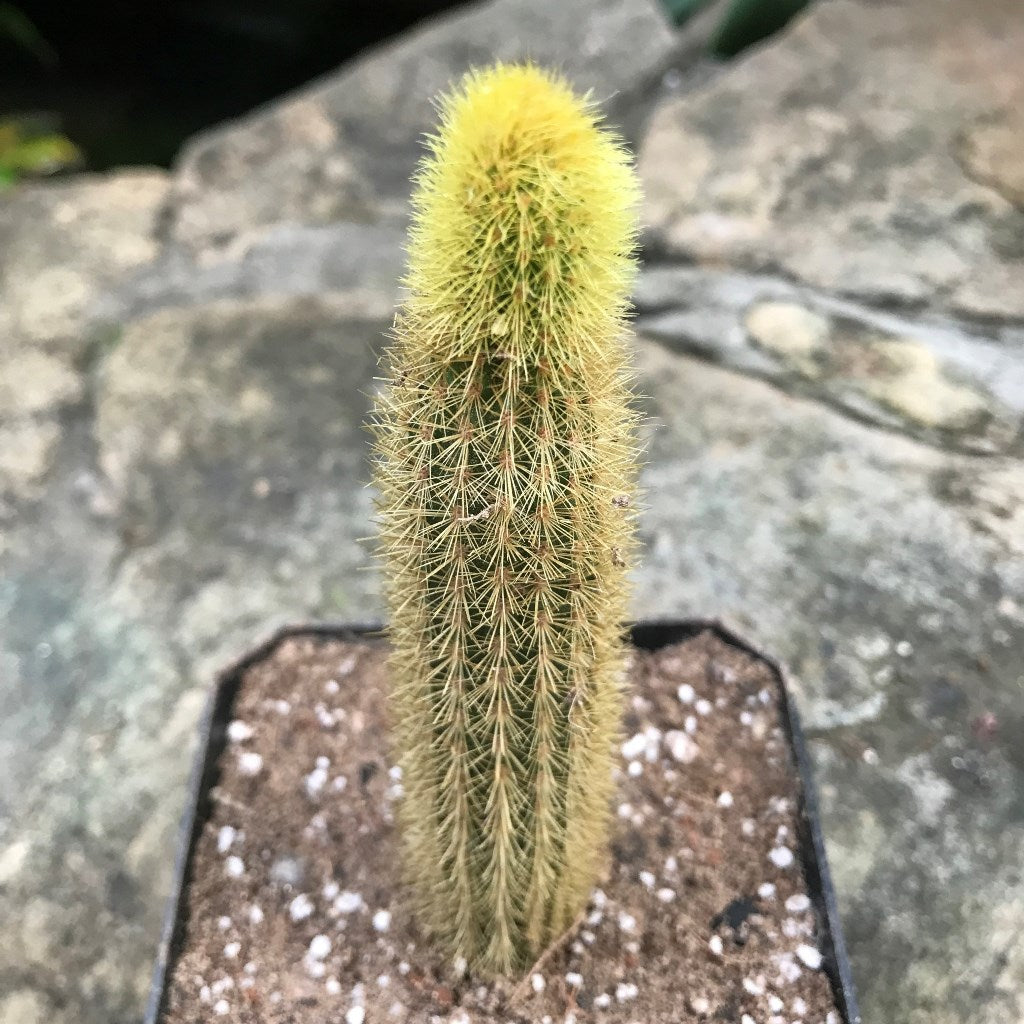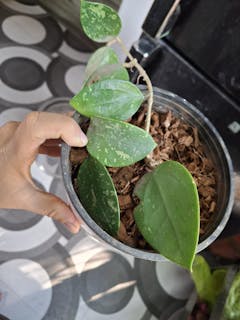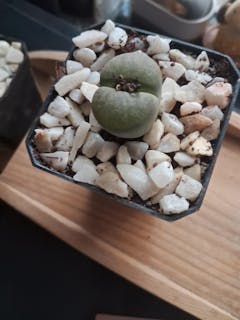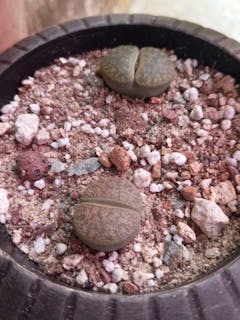Cleistocactus Winteri
Family
cactaceae
Native
Argentina
Description
Cleistocactus winteri is a attractive cactus with very long white and soft, hairlike golden spines. The common name Monkey's Tail refers to the appearance of the hairy stems. It is a vigorous, epilithic (growing on rocks) cactus, branching at the base. At first upright, then pendent and up to 8.2' long. The stem is cylindrical, light green, up to 3" in diameter, completely concealed by the spines. The flowers are vivid orange to salmon-pink and up to 3" long
This plant is a heavy bloomer and mature cactus's, over 50 cm tall, will profusely produce deep violet-red tubular, slightly curved flowers. The blooms are 6 to 9 cm long and protrude horizontally from the stem on the sides near the tips. In common with other cacti in the genus Cleistocactus, the flowers hardly open, with only the style and stamens protruding. Floral tube with silky hairs.
Environment
Monkey's Tail cactus require filtered bright light, but not in full sun that will sun scald it. It need a well drained soil mix. Water regularly in summer but allow to dry fully before watering again. During the winter months they should be rather kept dry. Since they are rapid growers need plenty of space for their roots, repotting should be done every other year or when the plant has outgrown its pot. A slow-release fertilizer applied in the spring will be sufficient for the whole year.

